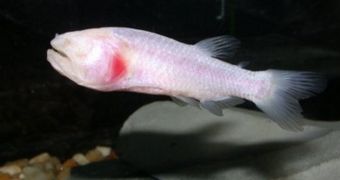More than 50 years ago, a team of American scientists made a remarkable discovery. They were able to prove the existence of a peculiar species of fish that had two main traits to distinguish it from other similar creatures. First of all, it only lived underground, and second of all, it had no eyes. A single specimen of the incredibly rare animal was caught and analyzed, and then the results presented to the international scientific community. Researchers then forgot about it, until recently, when a group of investigators rediscovered a small number of individuals.
The creature is so weird that scientists believe it managed to survive millions of years of evolution solely because of the environment it inhabits. In other words, it could very well represent a living fossil of a type of fish that existed a long time ago. While its relative died or evolved on the surface, this particular species managed to endure deep underground, making do with the limited resources at its disposal. Given the places it lives in, researchers say it's no wonder the creature lost its eyes. Evolutionarily speaking, they serve no purpose in the dark, but rather take large amounts of energy for nothing. As soon as the necessity was gone, the eyes disappeared as well, the BBC News reports.
In a paper accompanying the findings, which appears in the latest issue of the esteemed scientific Journal of Fish Biology, the research team behind the investigation again stresses the fact that the elusive animals only live in Brazil. The scientific name for the creatures is Stygichthys typhlops. The work that saw the species rediscovered was conducted by researchers at the University of Sao Paulo, who were led by ichthyologist (fish expert) Dr Cristiano Moreira. “This was the most enigmatic species of the order Characiformes, a group of freshwater fishes that includes piranhas and tetras,” the team leader explains.
“Because it was never collected since, it was assumed that is was an endangered species. However, no one knew. There was no information of its distribution, abundance, anything,” he says. The team was able to collect no less than 34 specimens, which they only found after looking for suitable wet wells. When these locations were identified, setting the traps and collecting the actual fish proved to be easy. “Morphologically, Stygichthys is very different from any species in the group, so much so that we are still not able to say to which species it is more related,” Dr Moreira adds. “The surface species of this group could have gone through extinction, while Stygichthys because of its habitat was spared. But this is only speculation,” he concludes.

 14 DAY TRIAL //
14 DAY TRIAL //